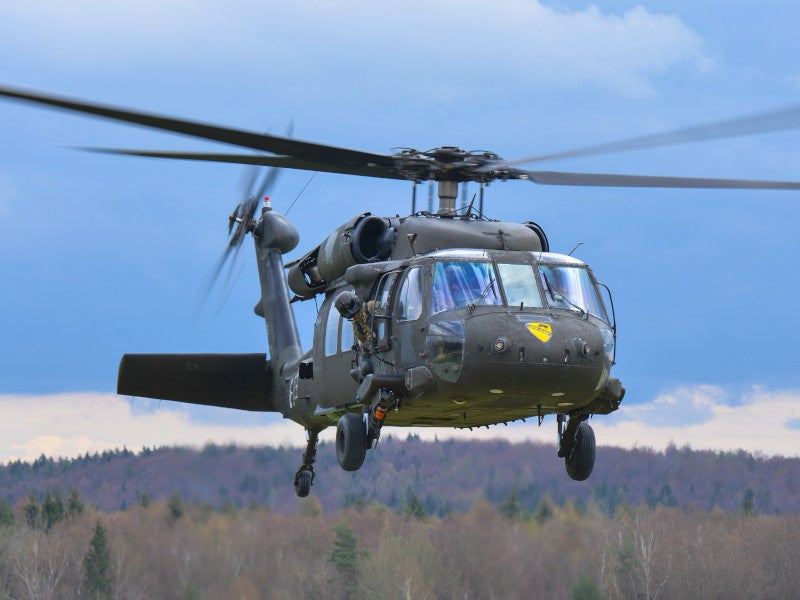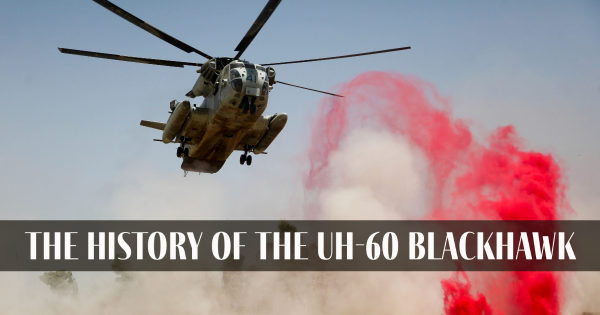Flight Ready: Ensuring Optimal Condition for Your UH 60 Helicopter
Flight Ready: Ensuring Optimal Condition for Your UH 60 Helicopter
Blog Article
Understanding the Mechanics and Design Behind Uh 60 Helicopters
The UH-60 helicopter, commonly understood as the Black Hawk, stands as a peak of modern-day rotorcraft technology, personifying a mix of durable design and intricate auto mechanics. From its beginning to its current versions, the advancement of this aircraft showcases a fusion of technology and usefulness. As we peel off back the layers of the UH-60's design, a globe of complex systems and meticulous engineering emerges. Comprehending the technicians and engineering behind this functional airplane unveils a realm where precision fulfills power, and where each element plays an essential function in attaining trip.
Background of UH-60 Helicopters
The background of UH-60 helicopters traces back to the late 1970s when the United States Military looked for a functional and innovative utility helicopter to change its aging fleet. In response to this need, the Sikorsky Airplane Firm established the UH-60 Black Hawk helicopter. Introduced in 1979, the UH-60 rapidly ended up being a staple in armed forces operations due to its excellent capabilities.
The UH-60 was designed to excel in a variety of missions, consisting of troop transport, medical evacuation, electronic warfare, and unique procedures. Its ability to adapt to various functions made it a beneficial possession to the U.S. uh 60. Military and other army forces around the globe
Throughout the years, the UH-60 platform has actually gone through several upgrades and variants to enhance its efficiency and equal advancing objective requirements. These helicopters have actually seen considerable service in problems such as the Gulf War, Afghanistan, and Iraq, showcasing their reliability and convenience in diverse functional environments. The UH-60's rich background is a testament to its long-lasting legacy as a top utility helicopter.

Engine and Power Solutions
Using advanced propulsion innovation, UH-60 helicopters are furnished with innovative engine and power systems to make certain optimum efficiency and integrity in a series of functional circumstances. The UH-60, generally called the Black Hawk, is powered by two General Electric T700-GE-701D engines, each efficient in delivering up to 1,940 shaft horsepower. These turboshaft engines provide the necessary drive for the helicopter to accomplish its goals successfully, including army transport, medical discharge, and battle support.

Blades System and The Rules Of Aerodynamics
How do the blades system and aerodynamics of UH-60 helicopters add to their functional performance and trip capacities? The blades system of the UH-60 helicopter plays an essential role in offering lift and propulsion. The UH-60 features a four-bladed, fully articulated rotor system that enables high maneuverability and stability during trip. This layout enables the helicopter to execute a vast array of objectives, from transportation and clinical evacuation to deal with procedures.
The rules of aerodynamics additionally play a vital duty in the performance of UH-60 helicopters. The streamlined fuselage and blades blade layout reduce drag, allowing the helicopter to attain higher speeds and better fuel efficiency. The wind resistant design of the UH-60 additionally adds to its capability to operate in varied environmental problems, including high elevations and hot temperatures.
Avionics and Flight Control Equipment

In its detailed coordination with the rotor system and aerodynamics of UH-60 helicopters, the avionics and flight control systems develop a critical network of technologies shaping the airplane's functional capabilities. In the UH-60, these systems include electronic display screens, communication radios, GPS navigating, climate radar, and autopilot systems.
The flight control systems of the UH-60 are accountable for translating the pilot's inputs into the ideal modifications to the blades system, ensuring stable flight and ability to move. These systems consist of hydraulic actuators, servos, and computers that interact to control the primary and tail blades, as well as other flight control surfaces. By specifically managing the helicopter's flight dynamics, these systems enable pilots to carry out a variety of objectives, from transportation and search-and-rescue to combat procedures, with accuracy and confidence.
Function and Applications in Aeronautics
The role and applications of avionics and flight control systems in air travel are important to ensuring the safe and effective procedure of aircraft, including UH-60 helicopters. Avionics systems in UH-60 helicopters include a variety of electronic systems that help in navigating, communication, monitoring, and controlling various airplane features. These systems include digital display screens, auto-pilot systems, communication radios, GPS navigating tools, and weather condition radar. Flight control systems play a vital function in navigating the helicopter in the air, keeping security, and making sure exact activities. The fly-by-wire modern technology used in modern-day UH-60 helicopters converts pilot inputs right into electronic signals, which are after that why not check here analyzed by the article source trip control computers to adjust the aircraft's control surfaces. Additionally, these systems incorporate safety and security functions such as autopilot settings, terrain recognition cautioning systems, and security augmentation systems to boost the general safety and functional capabilities of the UH-60 helicopters in different missions, consisting of troop transportation, medical discharge, search and rescue, and aerial firefighting.
Verdict
In conclusion, the UH-60 helicopter is a versatile aircraft with a rich history and advanced engineering. Its engine and power systems, rotor system, the rules of aerodynamics, avionics, and flight control systems all function together to make it a reliable and reputable machine.
In its intricate control with the rotor system and aerodynamics of UH-60 helicopters, the avionics and flight control systems create a vital network of modern technologies forming the airplane's functional abilities.The flight control systems of the UH-60 are accountable for converting the pilot's inputs right into the proper modifications to the rotor system, guaranteeing stable trip and ability to move. Avionics systems in UH-60 helicopters include a range of digital systems that help in additional resources navigation, communication, monitoring, and regulating different aircraft features. Furthermore, these systems integrate safety attributes such as auto-pilot modes, surface understanding cautioning systems, and stability enhancement systems to improve the general safety and operational abilities of the UH-60 helicopters in different objectives, consisting of troop transportation, clinical evacuation, search and rescue, and airborne firefighting.
Its engine and power systems, blades system, aerodynamics, avionics, and flight control systems all work together to make it a reputable and efficient equipment.
Report this page